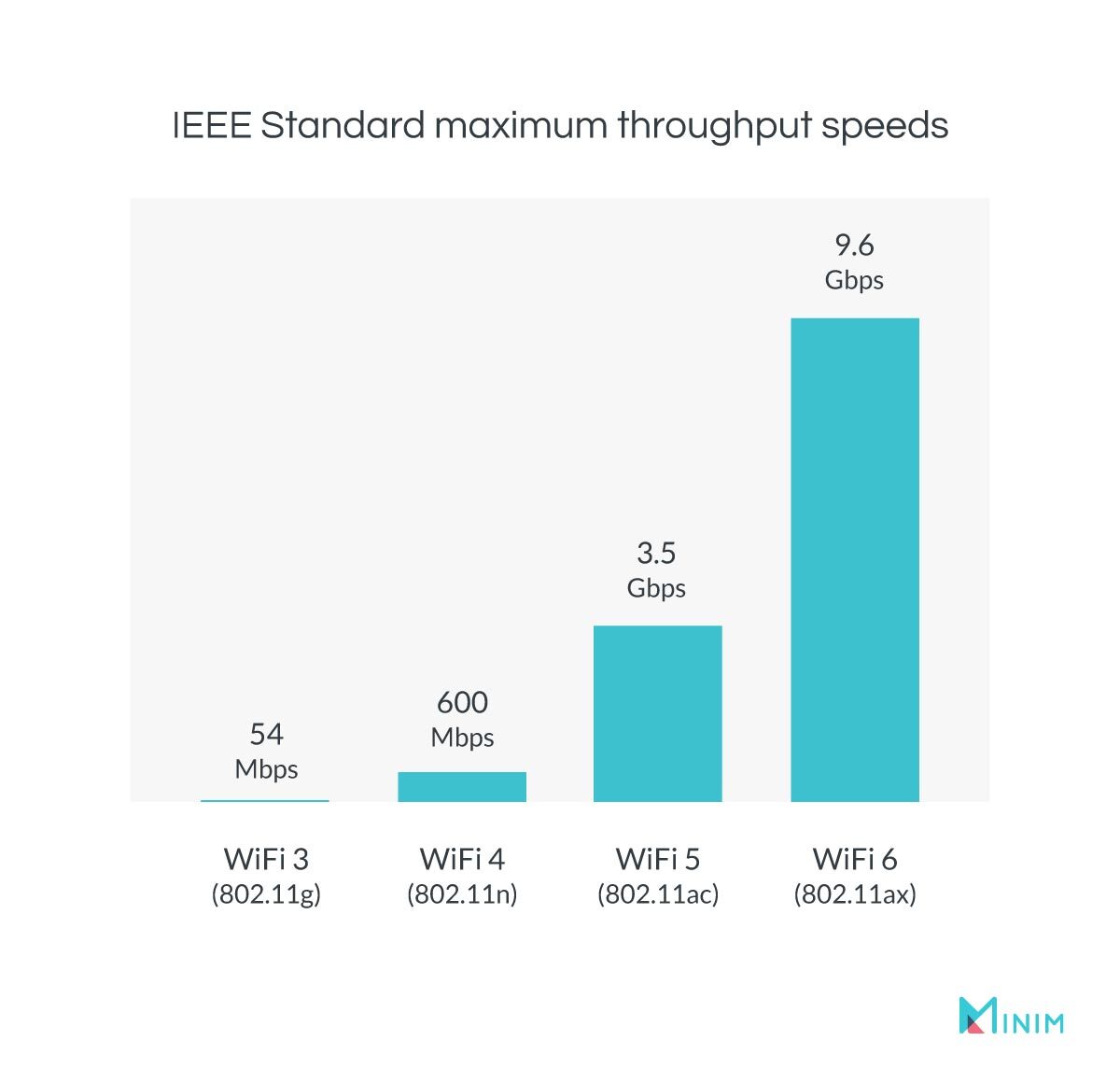WiFi 5 vs WiFi 6
WiFi 5 vs WiFi 6
Thinking now is the time to make the leap to WiFi 6? Or perhaps you’re wondering whether to wait for more WiFi 6 compatible devices to come on the market? To answer these questions, you must understand what fully harnessing the potential of WiFi 6 connectivity really takes.
Before we talk about speed, let’s break down a few facts:
What is WiFi 6?
So, what exactly is WiFi 6? WiFi 6 (802.11ax) is the latest generation of WiFi. Building off of the 802.11ac standard for wireless network transmissions, WiFi 6 promises faster throughput speeds, less bandwidth congestion, and WiFi spectrum efficiency.
What about WiFi 5?
When announcing this new standard (WiFi 6), the WiFi Alliance also announced a new naming convention with it—updating previously confusing WiFi standard names to a more user-friendly naming scheme.
Here’s an updated list with the new naming scheme for WiFi 6, WiFi 5, and previous versions.
WiFi 6 speed versus WiFi 5 and predecessors
WiFi 6 delivers faster speeds than the previous two generations of WiFi, but how much faster is it exactly? WiFi 6 is capable of a maximum throughput speed of 9.6 Gbps, compared to 3.5 Gbps on WiFi 5 and 600Mbps on WiFi 4. 
These speeds are theoretical maximums, however, and it’s unlikely to ever reach those speeds in real-world WiFi use. The average home WiFi user wouldn’t need these speeds even if their network could reach them—The average download speed in the US is currently just 45 Mbps, which is less than one half of a percent of WiFi 6’s theoretical maximum speed.
Despite the realistic need for the speeds that WiFi 6 can theoretically provide a single device, it can make the difference when it comes to entire networks. WiFi 6 was introduced in part to address the explosion of IoT devices. And considering the average US household currently has 12 connected devices and is expected to increase to 20 by 2025, home networks have been put under immense strain.
A WiFi 5 or WiFi 4-enabled router can only communicate with a certain number of devices at once, so the more bandwidth-hungry devices you have, the slower your network will work. This is where WiFi 6 really sets itself apart. Thanks to some new technologies, WiFi 6 enables routers to communicate simultaneously with more devices more efficiently, creating faster connections overall.
From: https://www.minim.com/blog/wifi-4-vs-wifi-5-vs-wifi-6


